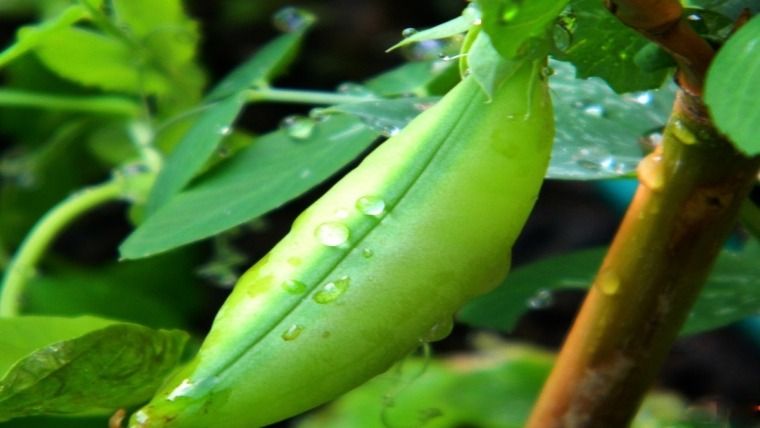
Written by Toni Salter, The Veggie Lady
Life doesn’t stop inside your home, office or favourite restaurant. Problems arise in the garden as well. So here are some life hacks that extend into your outdoor spaces too. These gardening hacks will save you money, cut down time and increase the productivity of your garden. The best thing about these gardening hacks is that they’ll help save the planet too because they’re all safe for organic gardening and use recycled household items.
I use all these 15 gardening hacks myself, so I know they work. And they save me a nice sum of money in the process. So stop spending money at the nursery on impulse buys and start saving money with these smart ideas instead.
Gardening hacks worth trying:
Gardening Hacks Using PET Bottles Or Milk Cartons
- Cloche
Cut off the bottom of a soft drink bottle and place the top part over your newly planted seedlings. This acts like a glasshouse to protect your seedlings in winter. Get a head start on your spring planting when you plant out your veggies early. You’ll have tomatoes ready to be harvested by Christmas.
- Plant labels
Cut long strips from empty milk cartons and use them as plant labels. If you’re like me, you’ll forget whether you’ve sown tomato seeds or capsicum seeds. I often forget where I’ve planted my daffodils in Autumn and then accidentally plant something over the top of them. Use the plant labels to remind you where your bulbs are in the garden so you avoid planting over them.
- Self-watering bottle
Use a small juice water bottle for this next gardening hack. Poke some holes in the lid of the bottle and fill the bottle with water and replace the lid. The easiest way to do this is to heat up a metal skewer over a flame (like your gas burner on the stove) and press the point down on the plastic lid. The plastic melts and makes a hole within seconds.
Turn the bottle upside down and partially sink it into the soil near a plant. It will slowly water the plant for days until the water runs out. This is a great hack if you’re a bit slack at watering your pot plants or if you’re going away for a short holiday.
Gardening Hacks Using Cardboard & Paper
- Toilet roll pots
Use old toilet rolls to sow seeds in. Cut 4 or 5 slits about 2 cm long at one end so you can bend the sections over to make a base at the end of the cylinder. Fill with soil and sow your seeds. When they’ve germinated, just plant the whole lot in the ground.
- Yellow sticky traps
White fly attacks tomatoes and can decrease the vigour of your plants. They’re attracted to yellow things. So make a trap using hard yellow cardboard placed on sticks near your tomato plants. Cover the cardboard with petroleum jelly (Vasoline) and the whitefly will get stuck on it when they land on it.
- Shredded office paper in your worm farm
If your worm farm looks wet and sticky and smells rank, then you aren’t putting enough dry material in with your veggie scraps. Add shredded paper from the office and mix it in the top layer of the worm farm. This will keep your worms happy and healthy. You can find out how to set up a worm farm and/or solve problems with your existing worm farm in my Worm Farming Masterclass. It’s included in my VIP Club Membership.
Gardening Hacks For Pest Control
- Chamomile tea bags
Save your chamomile tea bag when you’re finished with it and make up another cup of tea with the used tea bag. Chamomile has great anti-bacterial and anti-fungal qualities so use your cooled tea as a fungicide spray on roses to prevent ink spots.
- Milk spray for powder mildew on zucchini
Dilute full cream milk with an equal quantity of water and spray it on your zucchini plants as soon as they get powdery mildew. The enzymes in the milk react with sunlight so it really works well if you do this on a sunny day.
- Clove oil for possums
Possums can devour your veggie garden overnight!!! And it’s so disappointing to see all your hard work get ruined. Spray clove oil near your plants to repel these pesky creatures.
I have many more pest control hacks in my Organic Pest Management Masterclass.
Gardening Hacks With Your Plants
- Regrow celery
Don’t pull your celery out when it starts to flower. Cut your celery plant down to about 2 cm above the ground and it will reshoot and keep growing again.
- Potted herbs in your cabbage patch
Repel cabbage white butterfly and stop grubs from eating your brassicas by placing potted herbs in the garden bed with them. The smell of mint, coriander and sage confuses their sense of smell and they will stay away from your plants. Learn how to grow herbs in a balcony garden here.
- Dead-head to keep plants flowering
Keep your plants flowering for longer by removing the dead flowers (this is called dead-heading). The plants will refocus their energy to produce more flowers.
Propagation Hacks
Everyone loves saving money and getting free plants, so try these gardening hacks and tips for saving seeds and growing more plants.
1. Tomato seeds on a paper towel
Select your best homegrown tomato and try to be disciplined enough not to eat it. This will be the best choice for saving seeds so you get another generation of similar plants next season. Squeeze the pulp and seeds onto a paper towel and allow them to dry out for a couple of weeks.
Store the paper towel with seeds on it in a cool, dry, well-ventilated spot (not in the fridge) An old shoe box on a bookcase is perfect. Next season just tears off a section of paper towel and plant it in a pot with potting mix, cover lightly with more soil and keep damp.
2. Viable seeds sink into the water
Did you know that bad seeds float? It’s just like old or rotten eggs that float in a bowl of water. So test out if your seeds are still ok to germinate by putting them in a jar of water. Discard the ones that float and plant the ones that sink.
3. Honey for propagating
You can make new plants from old ones when you grow cuttings taken from an old plant. Use natural raw honey to help plant stem cuttings strike roots. Honey protects the cuttings from bacteria and fungus and encourages hormones in the cutting to stimulate root growth.



